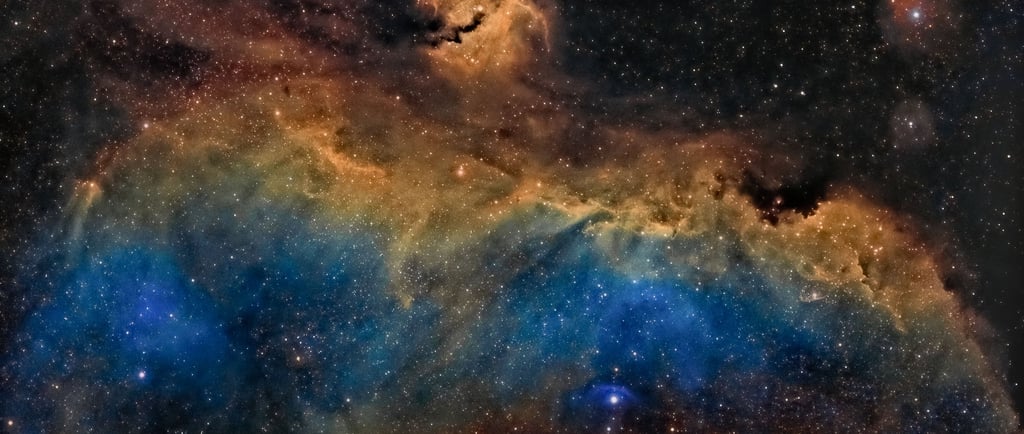IC 2177: The Seagull Nebula


Introduction to IC 2177
IC 2177, commonly known as the Seagull Nebula, is a remarkable astronomical feature located at the borders of the constellations Monoceros and Canis Major. Situated approximately 3,650 light years away from Earth, this large, roughly circular H II emission nebula captures the attention of both astronomers and enthusiasts alike.
Characteristics of the Seagull Nebula
The Seagull Nebula is predominantly recognized for its stunning display of star formation and intricate gas structures. It is illuminated by the brilliant light of the B0 subgiant star HD 53367, a young star with an impressive mass of 20 solar masses. This star significantly contributes to the nebula's visibility, making it a stunning sight for astrophotographers and a focal point for various research studies. Moreover, HD 53367 is accompanied by five solar mass companions that orbit in a high elliptical manner, further complicating the dynamics of this remarkable region.
The Significance of H II Regions
H II regions, like the Seagull Nebula, play a crucial role in the lifecycle of stars. They are vast clouds of hydrogen that become ionized due to the high-energy radiation emitted from nearby hot stars. This process not only leads to the birth of new stars but also enriches the surrounding interstellar medium with heavier elements created during stellar evolution. As such, IC 2177 serves as a significant laboratory for scientists to study these intricate processes of star formation and the complex interactions between stars and their surrounding environments.
In summary, IC 2177, or the Seagull Nebula, exemplifies the dynamic and awe-inspiring nature of the universe. With its distinct features, powerful illuminating star HD 53367, and role within the H II category, it stands as a testament to the beauty of cosmic phenomena. For anyone interested in the intricacies of our cosmos, the Seagull Nebula is certainly worth exploring further.
